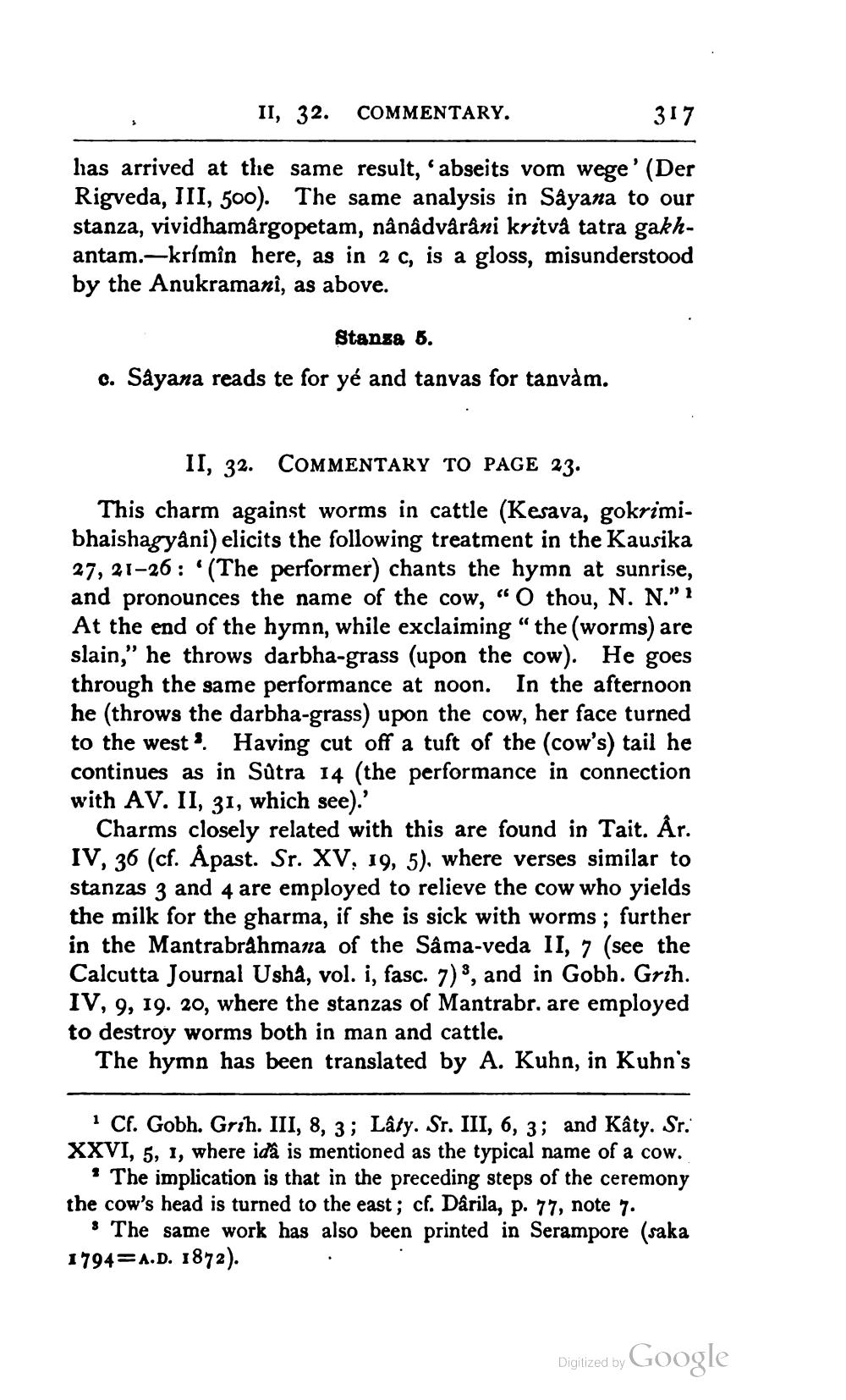________________
II, 32.
317
has arrived at the same result, 'abseits vom wege' (Der Rigveda, III, 500). The same analysis in Sâyana to our stanza, vividhamârgopetam, nânâdvârâni kritvâ tatra gakhantam.-krímîn here, as in 2 c, is a gloss, misunderstood by the Anukramani, as above.
COMMENTARY.
Stanza 5.
c. Sâyana reads te for yé and tanvas for tanvàm.
II, 32. COMMENTARY TO PAGE 23.
This charm against worms in cattle (Kesava, gokrimibhaishagyâni) elicits the following treatment in the Kausika 27, 21-26: (The performer) chants the hymn at sunrise, and pronounces the name of the cow, "O thou, N. N."1 At the end of the hymn, while exclaiming "the (worms) are slain," he throws darbha-grass (upon the cow). He goes through the same performance at noon. In the afternoon he (throws the darbha-grass) upon the COW, her face turned to the west. Having cut off a tuft of the (cow's) tail he continues as in Sûtra 14 (the performance in connection with AV. II, 31, which see).'
Charms closely related with this are found in Tait. År. IV, 36 (cf. Åpast. Sr. XV, 19, 5), where verses similar to stanzas 3 and 4 are employed to relieve the cow who yields the milk for the gharma, if she is sick with worms; further in the Mantrabrâhmana of the Sâma-veda II, 7 (see the Calcutta Journal Ushâ, vol. i, fasc. 7), and in Gobh. Grih. IV, 9, 19. 20, where the stanzas of Mantrabr. are employed to destroy worms both in man and cattle.
The hymn has been translated by A. Kuhn, in Kuhn's
"
1 Cf. Gobh. Grih. III, 8, 3; Lâty. Sr. III, 6, 3; and Kâty. Sr. XXVI, 5, 1, where idâ is mentioned as the typical name of a cow. The implication is that in the preceding steps of the ceremony the cow's head is turned to the east; cf. Dârila, p. 77, note 7.
The same work has also been printed in Serampore (saka 1794 A.D. 1872).
Digitized by
Google




